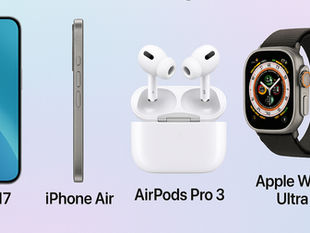
Is AI the Secret Weapon for Creativity or Its Silent Assassin?
0
18
0
In today’s rapidly changing landscape, the role of artificial intelligence (AI) in creativity is at the center of a heated debate. Is AI enhancing the creative process, or is it hindering human expression? With tools like ChatGPT, Midjourney, and Sora transforming how we create, artists, writers, and musicians are faced with important choices. This exploration dives into the complicated relationship between AI and creativity, examining both its potential and its pitfalls.
The Rise of Generative Tools
Generative AI has quickly become influential in creative fields by offering innovative tools capable of producing text, art, music, and more at a scale previously unimaginable. These technologies can mimic styles, suggest ideas, and even complete projects based on simple prompts.
For example, a painter might use Midjourney to create dozens of variations of a single concept in just a few minutes. By generating multiple designs, the artist can discover new styles and techniques that spark fresh inspiration. Similarly, writers can leverage ChatGPT to overcome blocks—often receiving plotted storylines or natural-sounding dialogues that enhance their narratives.
Industries are already witnessing significant shifts. According to a report from McKinsey, organizations that adopt AI tools in creative processes have seen up to a 30% increase in productivity. This underlines how these tools can serve as both assistants and collaborators, pushing creators to explore new avenues and expand their artistic boundaries.
Yet, the critical question remains: Are these tools truly enhancing the creative process, or are they overshadowing the unique touch of human ingenuity?
The Argument for AI Enhancement
Supporters of AI in creativity emphasize that it serves as a catalyst for originality. Take, for instance, a graphic designer using a program to generate multiple logos in minutes. The time saved allows the designer to develop marketing strategies and brand narratives that resonate with customers on a deeper level.
Moreover, generative tools like ChatGPT allow writers to experiment with various genres effortlessly. For instance, authors who previously struggled with plotting can use AI suggestions to create compelling narratives. By turning a mundane conflict into a thrilling plot twist, the writer focuses more on character development and emotional depth.
This collaboration does not diminish the human element; rather, it amplifies it. Artists can achieve new levels of creativity by embracing AI as a partner rather than seeing it as a competitor.
The Concerns of Replacement
On the other hand, critics raise legitimate concerns about AI's potential to replace human creativity. They argue that reliance on technology for ideas may dilute the authenticity and emotional resonance typically found in human-created works. Can AI genuinely comprehend the complexity of human experience?
Consider a scenario where a musician uses Sora to create a melody. While the software can generate sounds based on statistical algorithms, it may struggle to encapsulate the raw emotion behind a personal experience, such as loss or joy. For many, this lack of genuine understanding makes the creative use of AI feel less authentic.
While AI can analyze and replicate styles, it cannot experience life. This raises a crucial question: How can we ensure that AI-generated content reflects the rich emotional landscapes of human existence?
Balancing Automation and Authenticity
A promising middle ground lies in using AI to enhance rather than replace human creativity. By viewing AI as a tool to enrich their artistic voice, creators can unlock new forms of expression.
Imagine a novelist who uses AI to suggest various plotlines and character arcs while staying true to their storytelling style. By engaging with these suggestions, the novelist can explore themes they might not have considered, infusing the narrative with personal experiences to deepen the story.
Artists are already finding this balance. Design studios utilize AI to brainstorm ideas and generate artwork quickly, allowing them to concentrate on polishing their creations. Musicians are incorporating AI-generated beats into their tracks, which complements their unique sounds. This harmonious relationship between humans and AI exemplifies how technology can boost creativity instead of stifling it.
As we look ahead, it's crucial to recognize that our creative tools should not define us; rather, our unique perspectives and experiences remain central to our artistic narratives.
A New Wave of Creativity
The cultural landscape is transforming, and AI is playing a key role in this evolution. Artists who integrate AI into their creative processes are not just using a tool; they are leading the way at the crossroads of technology and art.
This new wave of creativity focuses not only on what is created but also on the approaches taken to create it. The results of combining human intuition with AI will redefine traditional artistic genres. For example, the rise of AI-generated digital art has already led to the creation of new styles, such as algorithmic art, which may become its genre.
However, this evolution raises important questions about ethics, ownership, and the role of the artist. How do we define authorship in a world where AI-generated work is becoming more prevalent? Engaging with these questions will help shape the future landscape of creativity.
Embracing the Future of Creativity
The relationship between AI and creativity is complex, encompassing both concerns about authenticity and excitement for innovation. As AI technologies advance, the future may not be about AI extinguishing creativity but rather energizing it in ways we could only dream of.
True artists recognize that the partnership between human ingenuity and AI can lead to transformative creativity. By collaborating with AI instead of fearing it, new pathways for imagination emerge, pushing artistic boundaries further than ever before.
In this evolving story, artists remain central, empowered by technological advancements while retaining their human essence. Let us celebrate this partnership, ushering in an exhilarating era of creativity that knows no limits.








